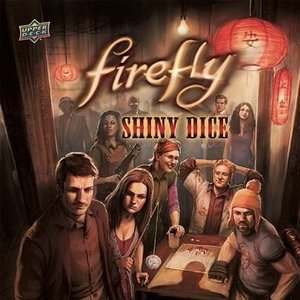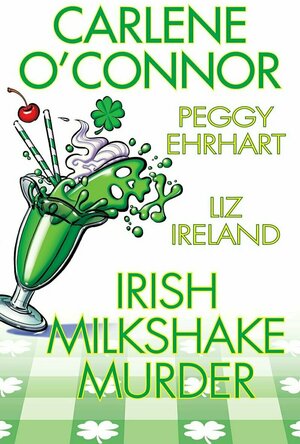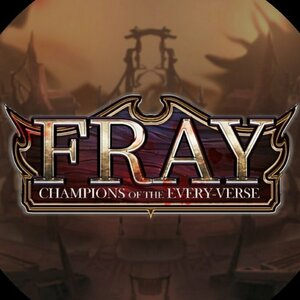
Firefly: Shiny Dice
Tabletop Game
Firefly: Shiny Dice lasts three rounds, and whoever has the most points after three rounds wins. In...
Merissa (13575 KP) rated A Voice at Midnight (Regency Rhapsody #4) in Books
Apr 10, 2023
When she gets there she meets two men who are also attending together and feels a strange sense of familiarity with them both. Then the atmosphere of the castle comes into play and people start acting strangely, shadows are cast by no one and music can be heard where there should be none.
The ghosts at Wyemont Castle are real and they are certainly not like Casper! There has been a curse placed on the castle and its inhabitants and the ghosts keep trying to make history repeat itself so that the curse won't be broken.
This is a wonderfully written novella with enough action going on to keep you intrigued as you turn the pages. It is written in a genteel style so completely appropriate for the times. This is not a bodice-ripper but is all proper and above board (unless you count a couple of kisses between Vero and Tristan before they announce their courtship/engagement). With this story, you could either read it on the build-up to Samhain/Halloween for the ghost story aspect or on the build-up to the Winter Solstice as this is when the story reaches its climax. Either way, I would recommend curling up with this book, a hot drink and relax.
I love Elizabeth Cole's writing style and have enjoyed more than one of her books. I can recommend her highly without hesitation.
* A copy of this book was provided to me with no requirements for a review. I voluntarily read this book, and the comments here are my honest opinion. *
August 11, 2016
Merissa (13575 KP) rated Heal Me (Love in the Pacific Northwest #5) in Books
Nov 17, 2023
It is very fast-paced at the beginning, from the meet-cute to them getting together. Then a big part of it is establishing and building on their relationship. And then, something happens that provides angst and bad decisions, heartbreak and humiliation.
I have to say, Gunnar is my favourite of the two. He is the more laid-back of the two, less bothered about whether someone hits the snooze button or has clothing on the floor. He also put himself first when needed - which in this case was a BIG need. Does he do everything right? No. But does he own up to his mistakes and try to put them right? Hell yeah! PTSD isn't something that is logical, so bad decisions are a part of it. With all the relationship-building that had been going on, I expected Jocelin to be pissed, but I just couldn't get on board with his whole reaction. It's not as though Gunnar wasn't suffering himself!
Maybe I feel this way simply because I haven't read the others. Who knows? As for the Victor story, I know it played its part, but it was obvious from the word go how that would pan out!
On the whole, I thoroughly enjoyed this book. It is hot and sexy with a cuddly teddy bear. I thought Gunnar's PTSD was extremely well-written. I would definitely read more in this series. Recommended by me.
** same worded review will appear elsewhere **
* A copy of this book was provided to me with no requirements for a review. I voluntarily read this book; the comments here are my honest opinion. *
Merissa
Archaeolibrarian - I Dig Good Books!
Nov 16, 2023

Taking Kinsley
Book
Kinsley…wants to lose his virginity with the person he feels safest with. His best friend. ...
Contemporary MM Romance Friends to Lovers

Zoom in Barcelona
Tabletop Game
Travel around the city of Barcelona and take the best photos to win the game! In Zoom in...

The Judge's List
Book
'Besides the usual Grisham virtues of an arresting idea, polished plotting and vivid social...
Heather Cranmer (2721 KP) created a post
May 20, 2022

Irish Milkshake Murder
Carlene O'Connor, Liz Ireland and Peggy Ehrhart
Book
Raise a glass for St. Paddy’s Day but keep a shamrock handy because some of these minty milkshakes...

Camping with the Boss (Pride Summer Camp 2025)
Book
“You have four hours to find your brother or take his place.” CEO Wade Darian is beastly in...
Contemporary MM Romance
Purple Phoenix Games (2266 KP) rated Fray: Champions of the Everyverse in Tabletop Games
Jul 1, 2020
DISCLAIMER: We were provided a prototype copy of this game for the purposes of this review. These are preview copy components, and I do not know for sure if the final components will be any different from these shown. Also, it is not my intention to detail every rule in the game, as there are just too many. You are invited to download the rulebook, back the game through the pending Kickstarter campaign, purchase it from your FLGS, or through any retailers stocking it after fulfillment. -L
Fray: Champions of the Every-Verse (referred to as just Fray from now on) is a game of dice rolling, grid movement, and fighting in which players are trying to eliminate all opponents and be the last remaining player in the arena. Before setting up to play, you must first determine how many Champions each player will control. Controlling only 1 Champion is considered “Single Mode” and makes for a quicker play-time. Players can control up to 3 Champions in a single game. After determining how many Champions each player will control, set up the game as described in the rulebook. You are now ready to begin!
A game of Fray is divided into a number of rounds, and to begin each round, all players must select one of their Champions to be the round leader, then roll a d6, and add the appropriate Initiative modifier. This determines the turn order for the round – the highest Initiative gets to go first, and so on in descending numerical order. It is important to note that in future rounds when determining Initiative, you may not select the same Champion to lead for consecutive rounds. After Initiative has been determined, player turns begin. On your turn, you will perform 2 Phases: an Item Phase and a Champion Phase. During the Item Phase, you have the opportunity to play as many Item cards from your hand as you wish. Item cards can give you special abilities or buffs for future turns, or can be played as reactions to opponent’s actions, depending on the card.
Once your Item Phase is done, you move to the Champion Phase. To begin your Champion Phase, choose which Champion you are using and roll the 3 Battle Dice. These dice help activate abilities on your turn. The chosen Champion may now move a number of squares as stated on their card. After movement, your Champion can now activate 1 action from the following: Attack, Defend, or Champion Ability. All actions require you to spend a number of resources in order to perform them, so this is where the Battle Dice come into play. Once you have performed your action, resolve abilities as needed (rolling a save against an attack, rolling the damage die, etc.). If, after resolving abilities, you still have unused Battle Dice, you can choose to store up to 2 of them for use on your next turn. You then repeat the entire Champion Phase with your next available Champion. Once you have used all of your Champions, your turn ends.
After all players have had their turns in a round, you move to the Loot Phase. Any player with any Champion within 3 spaces of the Loot Marker on the board gets to draw 1 Loot card. The first player then rolls a d6 and the Scatter die, and moves the Loot Marker appropriately for the next round. The new round is ready to begin, with all players rolling for Initiative once again. During play, if a Champion is reduced to 0 hit points, that Champion leaves the game. The player with the last remaining Champion on the board is the winner!
Ok, I know that seems like a lot, but the gameplay is actually pretty intuitive and streamlined. Here’s how a turn breaks down: play Item cards, roll Battle Dice, move Champion, perform 1 action, resolve, repeat with your other Champions, turn ends. That’s it! After going through the steps with my first Champion, the process just clicked and the gameplay flowed pretty seamlessly. It admittedly seemed pretty daunting at first when I was reading through the rules, but in the actual game, it is easy to pick up.
With the purpose of this game being knocking out all your opponents, obviously strategy is a pretty big aspect of the gameplay. All Champions have special abilities, attack combos, and types of attacks. Some Champions are only melee fighters and can interact with opponents 1 square away, others are only short- or long-ranged and must be at a distance to attack, and some have the option to be either melee or ranged. Each Champion requires a bit of a different strategy to be played successfully, and you’ve got to be able to adapt on the fly. That being said, this is a competitive combat game, so some players might not like being pitted directly against opponents and being targeted by others. The other strategic aspect to consider is the location of the Loot Marker on the board. The only way you ever get to draw Item cards is if you are within 3 squares of the Loot Marker at the end of the round. Are you willing to risk combat for a chance to gain an Item card? Or are you content with skirting the battlefield and letting your opponents take each other out? All things to consider when playing Fray.
The biggest drawback of Fray for me has to do with some components, or lack thereof. But as I stated earlier, this is only a prototype copy of the game, and I am sure that these things will be addressed in the final production copies! For starters, I’d like to see Turn Order Markers. Since the turn order varies each round based on Initiative, it would be nice to have some numbered markers to help players keep track of the order for the round. Along those lines, maybe a Turn Order Reference card for players could be added as well. The turn steps are generally pretty straightforward, but just having a reminder of the different types of movement, or what resources are required for which actions would be nice. And my final consideration for edits would be to include on each Champion card whether that Champion is a melee, short-ranged, or long-ranged fighter. That breakdown is in the rulebook, but having it on the card would be beneficial as well! Besides those three notes, the components of this prototype copy are phenomenal. The board, cards, and chits are all nice and sturdy. All of the game dice are high quality and easy to read. I know Brain Sandwich Games has plans for sculpted minis for the Champions, but even the simple standees in this copy are easily identifiable and will withstand many plays. The art of the cards is very detailed and awesome to look at. All in all, already a pretty great quality game!
Ultimately, I think Fray is a great game. It may need a little polishing up with some components, but the current gameplay is ready for production. I am not typically someone who enjoys directly competitive games, but Fray was one that I thoroughly loved. It has enough elements of strategy, combat, and luck of the dice rolls that it doesn’t feel targeting or confrontational. I am eager to follow the Kickstarter campaign and see what else Brain Sandwich Games has in store for an already awesome game! I would definitely recommend checking this one out – it’s a unique twist on a standard arena combat game.


